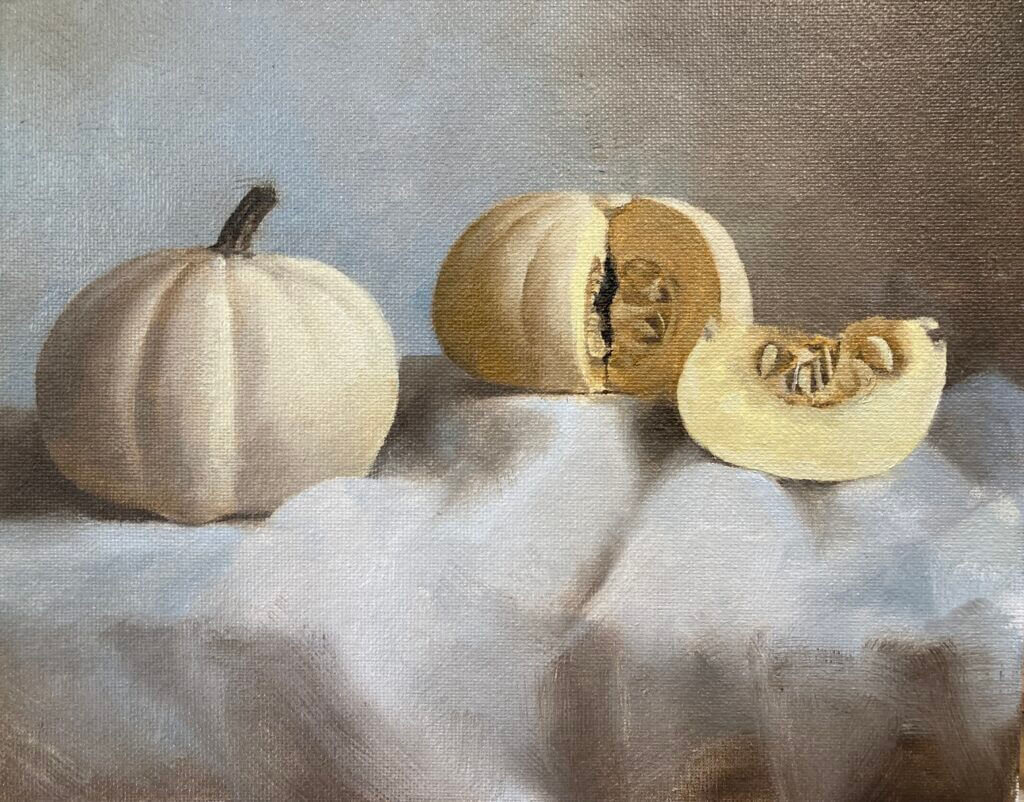This is the apple color study – session 2 (session 1 is here). After the struggle with surfaces last time this was never going to be a masterwork. But it’s been interesting (never thought apples could be that interesting). The painting is never going to hang on a wall but I wanted to work more on this and really try to get the colors as close as I could. It’s really good training in mixing but more importantly in just looking. Getting closer I think.
Munsell Chips to the Rescue

A couple of years ago I was really struggling with color in my watercolor painting. After googling a little I found Paul Foxton’s site learning-to-see.uk. He is an oil painter and, after a workshop with Anthony Waichulis weeas a convert to using the Munsell classification for color. He found it transformed his color work and, I’m now a convert too.
I won’t go into details here. If you go to Paul’s site and/or youtube channel he has a lot of free videos describing his process. It has been a godsend for me. I’m now able to see, mix and use color much better. I can now be much more accurate in my mixes but that’s not the main thing. The fact that color identification and mixing is no longer a lottery for me I can now be *much* more expressive color-wise. Gaining a skill in this area has increased my powers of expression through paint and is much more enjoyable as a result.
I will likely go into more detail about Munsell and watercolor in upcoming posts.
So I used Munsell chips extensively in this apple painting. You can buy (at great expense sadly) a large book of 1600 painted chips which cover the gamut of all the colors you can reach in paint. Identifying the colors you need in you setup you can then pluck out the relevant chips and mix to those.
Thanks to Munsell chips the apple study – session 2 was a success!







